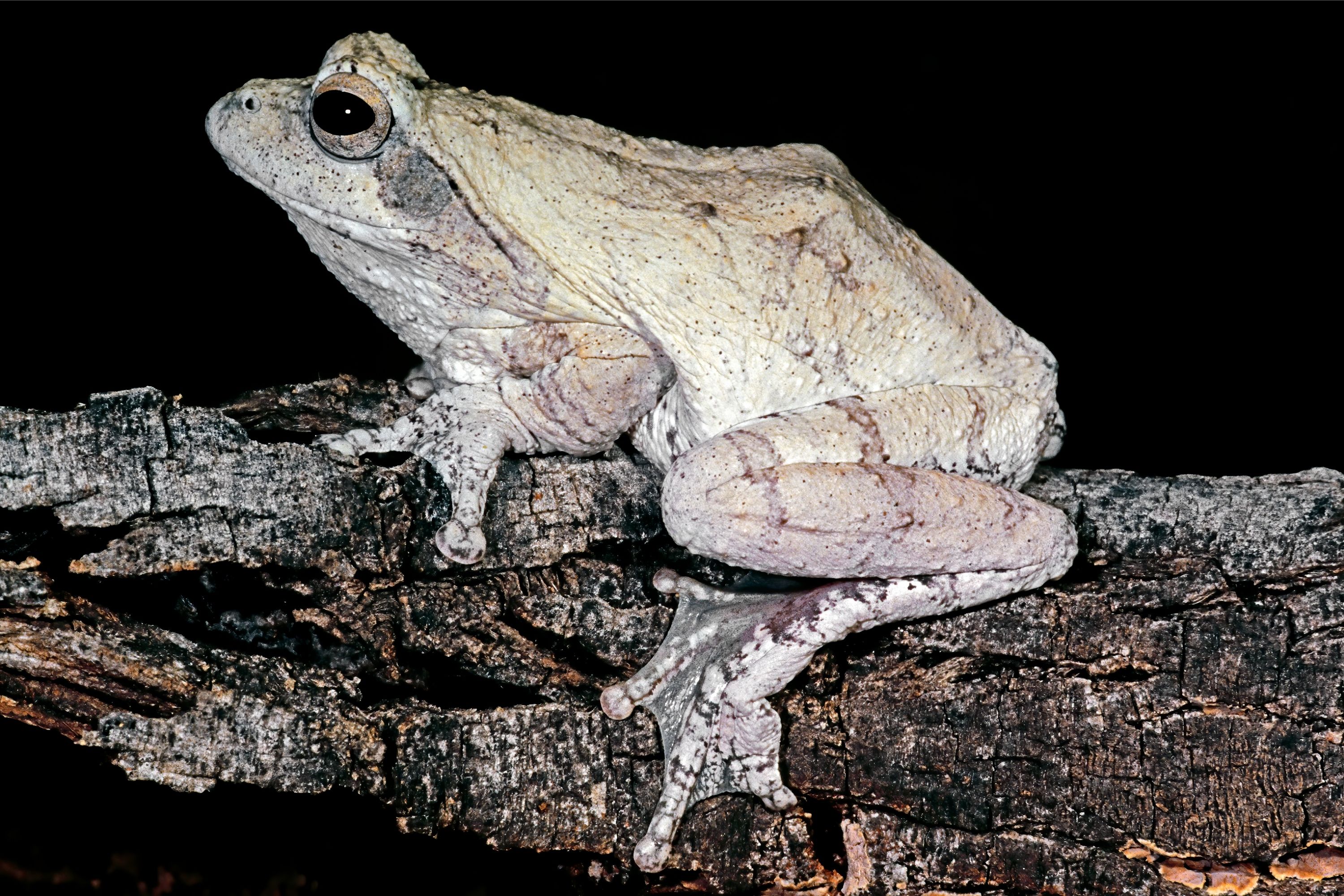Grey foam-nest tree frog
(Chiromantis xerampelina)

Description
The grey foam-nest tree frog (Chiromantis xerampelina), or southern foam-nest tree frog, is a species of frog in the family Rhacophoridae. It is found in Angola, Botswana, Kenya, Malawi, Mozambique, Namibia, South Africa, Swaziland, Tanzania, Zambia, and Zimbabwe, and possibly the Democratic Republic of the Congo and Somalia. Its natural habitats are subtropical or tropical dry forest, dry savanna, moist savanna, subtropical or tropical dry shrubland, subtropical or tropical moist shrubland, subtropical or tropical dry lowland grassland, subtropical or tropical seasonally wet or flooded lowland grassland, intermittent freshwater marshes, arable land, pastureland, rural gardens, urban areas, heavily degraded former forests, ponds, and canals and ditches. Chiromantis xerampelina are arboreal frogs. Like the other species in genus Chiromantis, they have discs on their toes and their outer two fingers are widely spaced from and nearly at a right angle to their inner two fingers on each hand. They reach up to 90 mm in size. Their skin is slightly bumpy and dry and its colors range between white and brown and change in response to temperature (see adaptations below). They tend to turn white when they die. These arboreal frogs do not frequently swim or inhabit water. They are frequently found in and around human settlements where lights, water, and refuse attract many insects. The grey foam-nest tree frog mates in what is described as the most extreme example of polyandry of all vertebrates. The simultaneous polyandry begins when a female begins releasing eggs onto a tree branch. Up to 12 males then cluster around her and fertilise the eggs by producing sperm which they whip into a foamy 'nest' with their hind legs. The female will leave temporarily to rehydrate before returning to the nest, as the entire ordeal can last several hours. Offspring of these polyandrous encounters are more likely to survive than the eggs fertilised by a single male. In the upcoming 1.19 update for Minecraft (The Wild Update), frogs in warm biomes will take their appearance.
Taxonomic tree:







